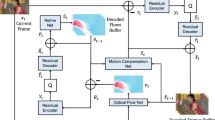Abstract
Currently, most video carving methods are to recover video files from disk file system, but these methods often do not work well for video form network streams, especially for live streaming video. In this paper, an adaptive video carving method is proposed to recover the live FLV (Flash Video) streaming video from network traffic. Firstly, to recover videos when there is no packet loss during data capture, a method based on network data structure is proposed. Secondly, to solve the problem of packet loss or corruption during data capture, another video carving method is proposed based on both the FLV structure and network data structure. Finally, to achieve good balance between computational complexity and recovery accuracy, an adaptive method based above two methods is proposed. The experimental results show that the proposed methods achieve good performance both in consuming time and recovery rate.
Access this chapter
Tax calculation will be finalised at checkout
Purchases are for personal use only
Similar content being viewed by others
References
Zhu, X., Chen, C.W.: A joint source-channel adaptive scheme for wireless H.264 video authentication. In: IEEE International Conference on Multimedia and Expo, pp. 13–18 (2010)
Dong, Y.N., Zhao, J.J., Jin, J.: Novel feature selection and classification of internet video traffic based on a hierarchical scheme. Comput. Netw. 119, 102–111 (2017)
Li, J., Bhattacharyya, R., Paul, S., Shakkottai, S.: Incentivizing sharing in realtime D2D streaming networks: a mean field game perspective. In: Computer Communications, pp. 2119–2127 (2016)
Espina, F., Morato, D., Izal, M., Magaña, E.: Analytical model for MPEG video frame loss rates and playback interruptions on packet networks. Multimed. Tools Appl. 72(1), 361–383 (2014)
Na, G.H., Shim, K.S., Moon, K.W., Kong, S.G., Kim, E.S., Lee, J.: Frame-based recovery of corrupted video files using video codec specifications. IEEE Trans. Image Process. Publ. IEEE Signal Process. Soc. 23(2), 517–26 (2014)
Zheng, X., Liu, Y., Mei, L., Chuanping, H., Chen, L.: Semantic based representing and organizing surveillance big data using video structural description technology. J. Syst. Softw. 102(C), 217–225 (2015)
Uzun, E., Sencar, H.T.: Carving orphaned JPEG file fragments. IEEE Trans. Inf. Forensics Secur. 10(8), 1549–1563 (2015)
Chen, S., Pande, A., Zeng, K., Mohapatra, P.: Live video forensics: source identification in lossy wireless networks. IEEE Trans. Inf. Forensics Secur. 10(1), 28–39 (2015)
Laing, S., Locasto, M.E., Aycock, J.: An experience report on extracting and viewing memory events via Wireshark. In: USENIX Conference on Offensive Technologies (2014)
Wu, T., Petrangeli, S., Huysegems, R., Bostoen, T., De Turck, F.: Network-based video freeze detection and prediction in HTTP adaptive streaming. Comput. Commun. 99, 37–47 (2016)
Matoušek, P., et al.: Advanced techniques for reconstruction of incomplete network data. In: James, J.I., Breitinger, F. (eds.) ICDF2C 2015. LNICST, vol. 157, pp. 69–84. Springer, Cham (2015). https://doi.org/10.1007/978-3-319-25512-5_6
Ning, J., Singh, S., Pelechrinis, K., Liu, B., Krishnamurthy, S.V., Govindan, R.: Forensic analysis of packet losses in wireless networks. IEEE/ACM Trans. Netw. 24(4), 1975–1988 (2016)
Sommer, P.: File system forensic analysis, B. carrier. Addison Wesley, ISBN 0-321-26817-2. Digit. Investig. 3(2), 103 (2006)
Richard III, G.G., Roussev, V.: Scalpel: a frugal, high performance file carver. In: Refereed Proceedings of the Digital Forensic Research Workshop, DFRWS 2005, Astor Crowne Plaza, New Orleans, Louisiana, USA, August 2005
Pal, A., Memon, N.: The evolution of file carving. IEEE Signal Process. Mag. 26(2), 59–71 (2009)
Park, J., Lee, S.: Data fragment forensics for embedded DVR systems. Digit. Investig. 11(3), 187–200 (2014)
Yang, Y., Zheng, X., Liu, L., Sun, G.: A security carving approach for AVI video based on frame size and index. Multimedia Tools Appl. 76, 3293–3312 (2016)
Acknowledgment
This work is supported by the National Key R&D Plan of China under grant no. 2016YFB0800201, the Natural Science Foundation of China under grant no. 61070212, 61572165 and 61702150, the State Key Program of Zhejiang Province Natural Science Foundation of China under grant no. LZ15F020003, the Key research and development plan project of Zhejiang Province under grant no. 2017C01065, the Key Lab of Information Network Security, Ministry of Public Security, under grant no C16603.
Author information
Authors and Affiliations
Corresponding authors
Editor information
Editors and Affiliations
Rights and permissions
Copyright information
© 2018 ICST Institute for Computer Sciences, Social Informatics and Telecommunications Engineering
About this paper
Cite this paper
Ge, H. et al. (2018). Adaptive Carving Method for Live FLV Streaming. In: Romdhani, I., Shu, L., Takahiro, H., Zhou, Z., Gordon, T., Zeng, D. (eds) Collaborative Computing: Networking, Applications and Worksharing. CollaborateCom 2017. Lecture Notes of the Institute for Computer Sciences, Social Informatics and Telecommunications Engineering, vol 252. Springer, Cham. https://doi.org/10.1007/978-3-030-00916-8_51
Download citation
DOI: https://doi.org/10.1007/978-3-030-00916-8_51
Published:
Publisher Name: Springer, Cham
Print ISBN: 978-3-030-00915-1
Online ISBN: 978-3-030-00916-8
eBook Packages: Computer ScienceComputer Science (R0)




